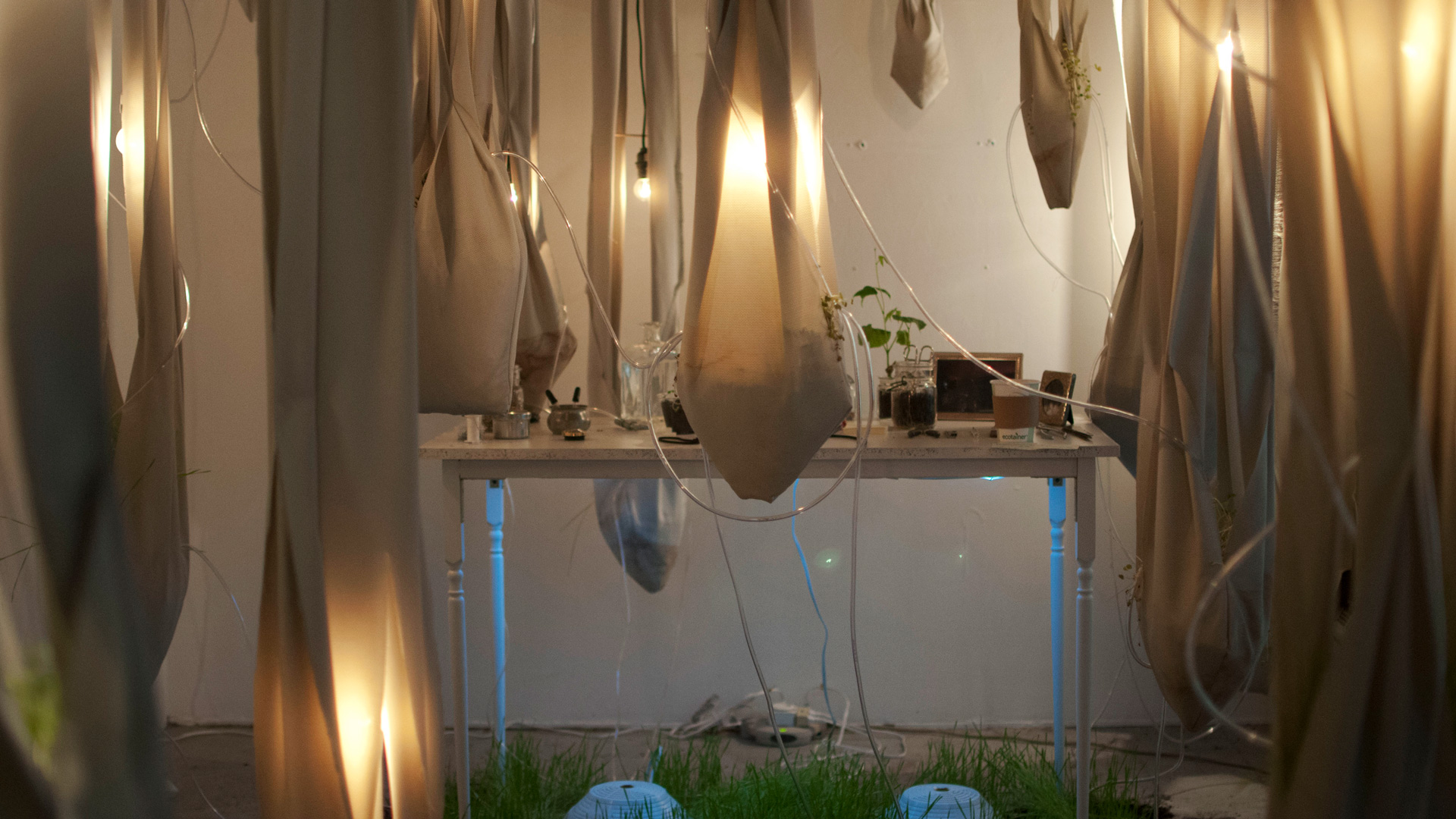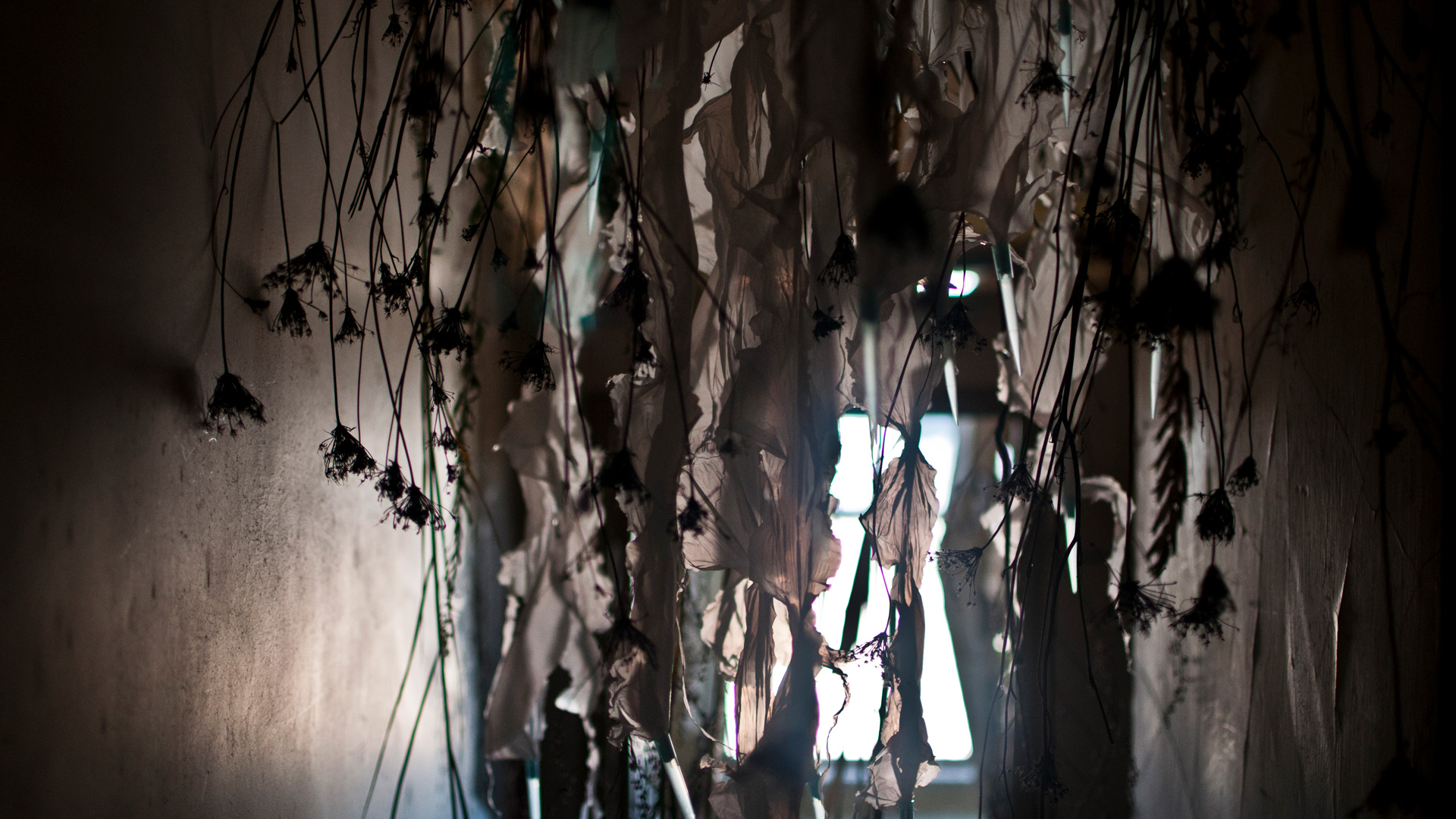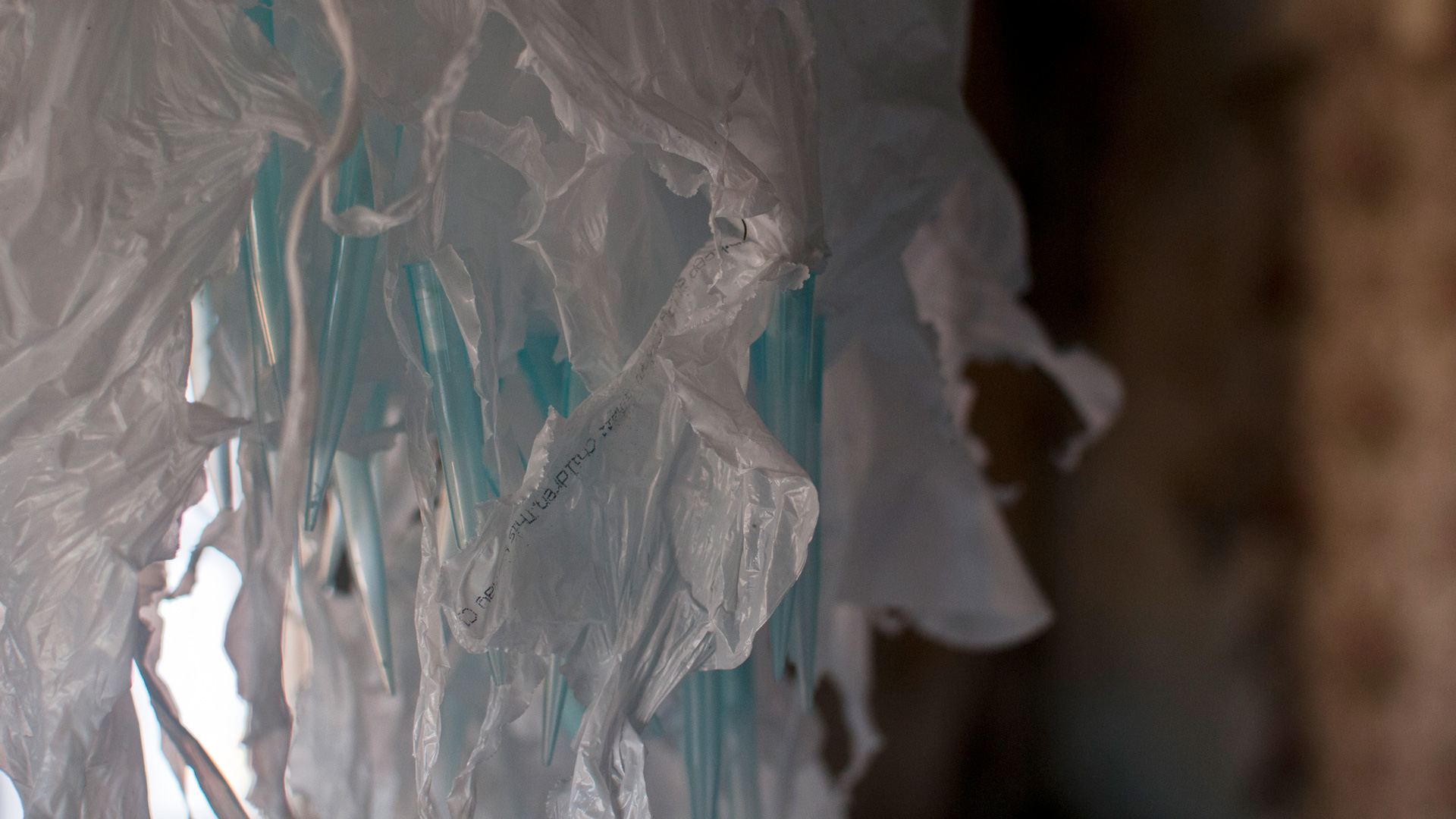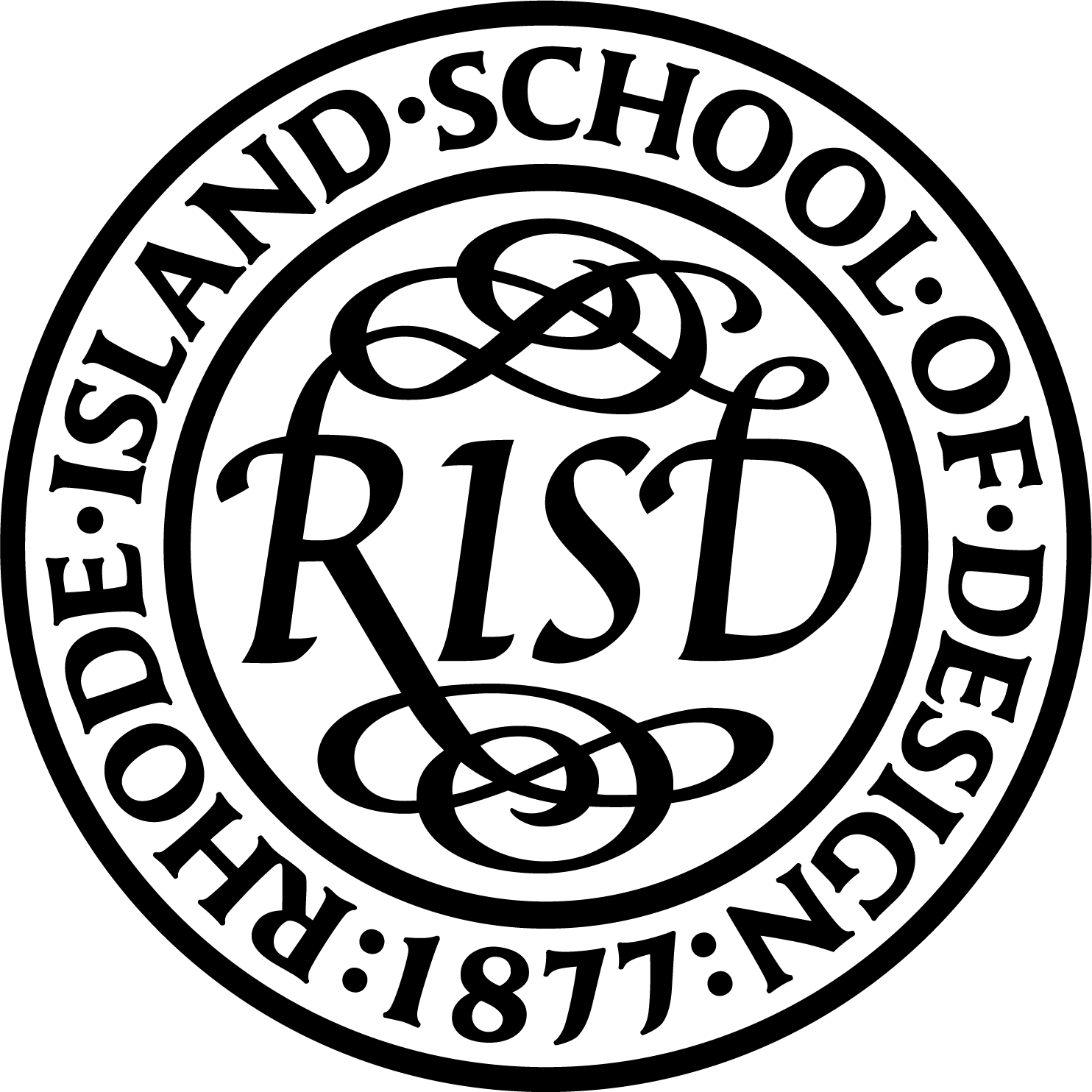Symbiosis

















︎ Creator:
Sophia Sobers
︎ Supervisor: Peter Yeadon
Researching the behavior of specific natural systems, Sobers created three biosystems that were based on symbiosis, parasitism, and deterioration. The three systems included living organisms that interact with the constructed environments that they inhabit: the walls, floors, ceilings, and furniture that make up a series of room installations throughout Providence, Rhode Island.
The symbiotic nature of each organism’s relationship with their artificial environment was reflected in its response to mediated conditions, and finding that they could utilize technological resources for their own means of survival. The project presented a future vision of nature and technology with its intersections, interactions, and mutations, whereby organisms mimic, and make use of, human-made materials and technologies.
Sobers called this form of adaptation: Technomimicry. You can think of it as organisms learning from the technology of humans. She explored living systems as open systems that interact with their environments (and in doing so acquire new properties/behaviors), where an organism continually reorganizes its own ability to adapt to our technology, and identifies technological waste as a resource.
Thus, the work is also a biofact (biofakte); it offers no distinction between nature and technology, rather, beings are considered both natural and artificial, due to human action and impingement. One obvious consequence is the in/ability of these new biosystems to sustain such artificial environments in the future. Evolution as product. The work posits that nature will adapt to our technological mess, and the organisms that will emerge from this will be new.
︎ Supervisor: Peter Yeadon
Researching the behavior of specific natural systems, Sobers created three biosystems that were based on symbiosis, parasitism, and deterioration. The three systems included living organisms that interact with the constructed environments that they inhabit: the walls, floors, ceilings, and furniture that make up a series of room installations throughout Providence, Rhode Island.
The symbiotic nature of each organism’s relationship with their artificial environment was reflected in its response to mediated conditions, and finding that they could utilize technological resources for their own means of survival. The project presented a future vision of nature and technology with its intersections, interactions, and mutations, whereby organisms mimic, and make use of, human-made materials and technologies.
Sobers called this form of adaptation: Technomimicry. You can think of it as organisms learning from the technology of humans. She explored living systems as open systems that interact with their environments (and in doing so acquire new properties/behaviors), where an organism continually reorganizes its own ability to adapt to our technology, and identifies technological waste as a resource.
Thus, the work is also a biofact (biofakte); it offers no distinction between nature and technology, rather, beings are considered both natural and artificial, due to human action and impingement. One obvious consequence is the in/ability of these new biosystems to sustain such artificial environments in the future. Evolution as product. The work posits that nature will adapt to our technological mess, and the organisms that will emerge from this will be new.
